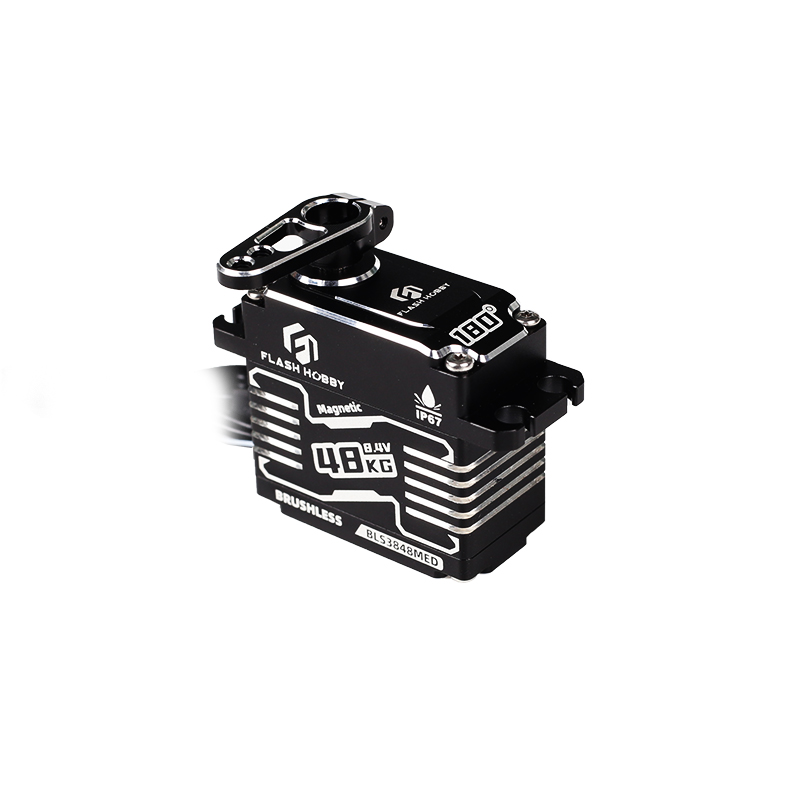Demystifying Servo Motors: The Heart of Precision Motion Control
2024-05-09
In the world of automation and robotics, precision and accuracy are paramount. Behind the scenes of many of these systems lies a crucial component known as the servo motor. But what exactly is a servo motor, and how does it contribute to the smooth and precise movement of machinery? Let's delve into the fundamentals of servo motors and explore their essential role in modern engineering.
Understanding the Basics:
At its core, a servo motor is a rotary actuator that allows for precise control of angular position, velocity, and acceleration. Unlike conventional motors, such as induction motors or stepper motors, servo motors are specifically designed for closed-loop control systems, where feedback mechanisms continuously monitor and adjust motor performance to achieve desired motion profiles.
How Servo Motors Work:
Servo motors operate on the principle of closed-loop control, wherein a feedback device, such as an encoder or resolver, provides real-time information about the motor's position, velocity, and acceleration. This feedback is fed into a controller, which compares it to the desired setpoint and adjusts the motor's output accordingly to minimize error and maintain precise motion control.
Key Components of a Servo System:
A typical servo system comprises several key components:
1. Servo Motor: The heart of the system, responsible for converting electrical energy into mechanical motion.
2. Feedback Device: Provides real-time feedback on the motor's position, velocity, and acceleration.
3. Controller: Processes feedback data and generates control signals to adjust motor operation.
4. Drive: Amplifies control signals from the controller to drive the motor with the required power and voltage.
Applications of Servo Motors:
Servo motors find applications across a wide range of industries and domains, including:
1. Industrial Automation: Used in robotics, CNC machines, conveyor systems, and pick-and-place applications.
2. Manufacturing: Employed in packaging machinery, printing presses, and assembly lines for precise motion control.
3. Aerospace and Defense: Utilized in aircraft control surfaces, missile guidance systems, and unmanned aerial vehicles (UAVs).
4. Medical Devices: Found in medical imaging equipment, surgical robots, and laboratory automation systems for precise positioning and manipulation.
5. Consumer Electronics: Integrated into cameras, 3D printers, and home automation systems for accurate movement and control.
Advantages of Servo Motors:
Servo motors offer several distinct advantages over other types of motors:
1. Precision: Servo motors provide highly accurate and repeatable motion control, making them ideal for applications that require precise positioning and synchronization.
2. Speed and Torque Control: Servo motors offer flexible control over speed and torque, allowing for dynamic adjustments to meet changing load requirements.
3. High Performance: Servo motors deliver fast response times and rapid acceleration, enabling quick changes in direction and velocity.
4. Energy Efficiency: By operating on a closed-loop control system, servo motors optimize energy consumption and minimize waste, leading to improved efficiency and reduced operating costs.
5. Versatility: Servo motors come in various sizes and configurations, making them adaptable to a wide range of applications and environments.
Conclusion:
In summary, servo motors are essential components in modern engineering, enabling precise and dynamic motion control across diverse industries and applications. With their unparalleled accuracy, speed, and versatility, servo motors continue to drive innovation and advancement in automation, robotics, and beyond. As technology evolves, so too will the capabilities of servo motors, ensuring they remain at the forefront of precision motion control for years to come.



